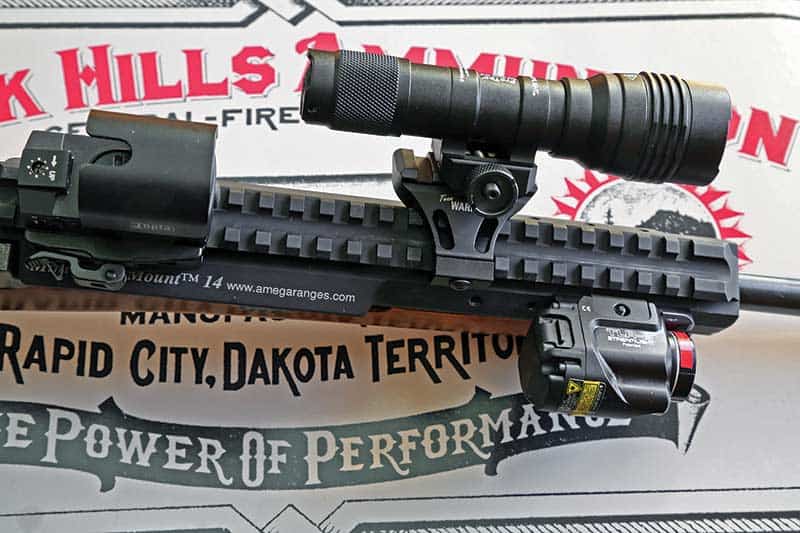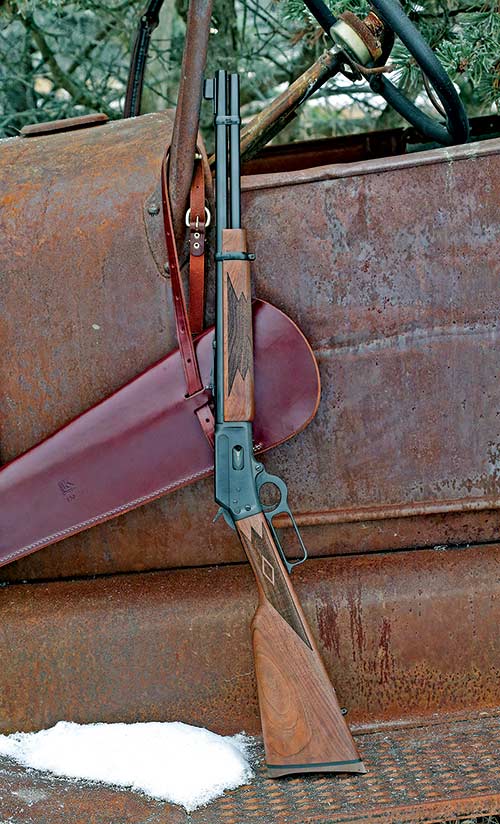Why Pistol Caliber Carbines?
When choosing firearms for home and personal defense, the first priority should be a handgun. This is due to the handgun’s great advantage; it is there when you need it. No one would dispute that a more powerful long gun, rifle or shotgun can be more effective at stopping a deadly threat. But much of the time, a long gun is just not practical. Generally, we cannot carry a rifle or shotgun with us as we go about our daily routine.
Many times, those who choose a long gun want one with more power than the typical carry handgun. Variations on the AR-15 are popular, as are other semi-autos, usually in .223/5.56, 7.62 x 39, .308/7.62. Among my acquaintances, there are a surprising number of lever-action .30-30s kept handy, and of course, shotguns are widely used. Most of these friends and acquaintances are capable handgun shooters and don’t see much benefit in a long gun duplicating the power level of their handgun. Instead, they want a long gun with greater power and range.
Pistol Caliber “Rifles”
What about the pistol caliber carbine (PCC)? Expert handgunners tend to disparage them, feeling they do nothing the handgun can’t do. Nonetheless, the concept of handguns and long guns using the same cartridges has a long history in America. An early and widely used combination dates to 1873, with the Colt Single Action revolver and Winchester 1873 rifle (or carbine) both using the .44 WCF (.44-40) cartridge.
In the novel True Grit, narrator Mattie Ross recounts an example. She and Deputy Marshal Cogburn have taken cover, waiting to ambush the Ned Pepper gang. Mattie, who misses nothing, notes how the marshal loads both revolver and rifle to full capacity using the same cartridges. “I thought they used different ones,” she writes. We know from earlier court testimony Cogburn’s handgun is “a Colt’s .44-40 revolver,” so the rifle was most likely a Winchester ’73.
PCC Benefits
What benefits does the PCC provide, both way back when and today?
For most people, accurate shooting is easier with a carbine than with a handgun. True, the expert handgunner can shoot about as accurately with a pistol as with a carbine, at least at close to moderate range. But how many handgunners are truly experts? Most shooters are going to shoot more accurately and faster with a long gun. When circumstances permit, as for home and campsite defense, it just seems like good judgment to use any available advantage. The weight of a typical carbine, 6 to 7 lbs. vs. 2 lbs. for a typical handgun, also reduces the recoil felt by the shooter.
The longer barrel of a carbine provides higher velocity than a handgun. How much it increases depends on the cartridge, load and barrel length. The website BallisticsByTheInch.com has some useful data on the topic. Comparing velocities from a 4″ barrel to a 16″ barrel, the 9mm Luger typically gains about 200 feet per second. The increase seems most dramatic with the .357 Magnum cartridge, which gains 400 to 500 fps with most loads. How much this increases effectiveness is open to debate, but it is a factor.
Most semiautomatic PCCs operate on the blowback principle, relying on a relatively heavy breechblock and recoil spring. Handguns for service cartridges such as the 9mm Luger or .45 ACP generally use a locked-breech system to keep weight down. I hesitate to say the carbines are more reliable as current semiautomatic handguns have truly impressive reliability. We can say the simple blowback design is inherently the most reliable semiautomatic design. In fact, if we factor in the possibility of human error in operating manual actions, the blowback may be the most reliable design of all.
Ammunition and magazine compatibility with your carry handgun may be an advantage. It simplifies stockpiling a supply of ammunition when the same cartridge fits both firearms. It further simplifies matters if the same magazines fit both firearms. Carbines can also utilize higher-capacity magazines, which may not be practical for concealed handgun carry.
Many modern handguns have accessory rails for attaching lights, laser aiming devices and the like. Some carbines have multiple attachment points, allowing a choice of several devices. Moreover, some devices, such as white lights, can be much larger and more powerful than would be practical on a concealed carry handgun. Streamlight, for example, makes some very powerful lights in their ProTac long gun series. The latest 2.0 version puts out an impressive 2,000 lumens with a beam distance claimed to be 266 meters. It should be adequate to light up a henhouse-raiding fox across the yard or to temporarily disorient an attacker across the room.
The pistol caliber carbine doesn’t replace either the handgun or the full-power service rifle but does provide considerable utility. For many homeowners, campers and hikers, it fills a very useful niche.







